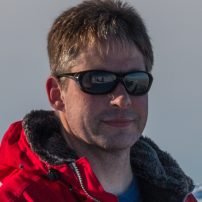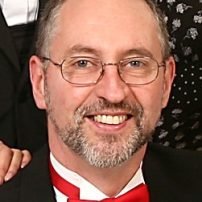
Description
The Diatom-ARCTIC project will improve estimates of sea ice primary production in the rapidly changing Arctic marine system by identifying the autecological (species-specific) responses of ice algae to growth conditions. The new understanding gained will classify the productive potential of different sea ice habitats, constrain current variability in pan-Arctic primary production and reduce uncertainties in predicting the future of this dynamic environment.
We will characterize relationships between sea ice habitat conditions and ice algal communities by collecting comprehensive physical-biogeochemical datasets in contrasting regions of the High Arctic and Canadian Arctic Archipelago. This will include measurements from an autonomous underwater vehicle, moored instrumentation, as well as discrete sampling. We will also perform dedicated laboratory experiments to determine how key diatom species change their physiology and production potential with manipulated light, nutrient and salinity conditions. Together these observations will be integrated into a biogeochemical model that simulates autecological responses of ice algae to growth conditions in current sea ice habitats of the Arctic, as well as those likely to occur in the future. This integrated approach to studying organisms at the base of the Arctic marine system will bring together scientists based in the UK, Germany, Canada, Finland, Denmark, and Norway. It is also integrated with other projects in the Changing Arctic Ocean mandate, including assessments of Arctic phytoplankton in Arctic-Prize and diatom grazers in DIAPOD. There are three workpackages (WP) in this project.
Workpackage (WP) Outline
WP1 – Characterizing habitat conditions and acclimation strategies
The influence of light, nutrient and salinity conditions on photophysiology (PE), gross production (GP) and net production (NP) will be monitored for whole algal communities in the field and on individual diatom species in the laboratory. Diatom taxa will be identified at the various ice habitats sampled, while laboratory experiments will focus on key diatom species that include Atthey septentrionalis, Haslea crucigeroides, Melosira arctica, Nitzschia frigida. In this WP we will:
- Investigate the local, regional and seasonal environmental controls on ice algal speciation;
- Evaluate the production and photophysiological responses of centric versus pennate diatom species under experimentally manipulated light, nutrient and salinity conditions
WP2 – Defining lipid composition as a function of growth conditions
The effect of growth conditions on lipid-biosynthesis will be analysed on samples of ice algal communities collected from the field and on key diatom species identified in WP1. By comparing results from natural field assemblages with culture experiments we will generate a new paradigm based on ever-more critical interpretation of lipid-sources, that will influence historical climate reconstruction, contemporary ecosystem and climate prediction studies. In this WP we will:
- Measure the lipid content and isotopic composition of ice algal communities from different sea ice habitats and growth conditions.
- Characterise how the lipid content and stable isotope composition of target diatom species changes with light, nutrient and salinity growth conditions.
WP3 – Evaluating the production potential of sea ice habitats
We will modify a pre-existing physical-biogeochemical sea ice model using autecological responses documented in experiments of WP1 to simulate ice algal production and composition for individual species. Using field measurements from an automated underwater vehicle and buoy we will evaluate the impact of autecological responses of sea ice algae at from localized habitat to regional scales. In this WP we will:
- Integrate experimental results into an improved autecological biogeochemical model for sea ice algae and validate model simulations with field data
- Apply the biogeochemical model in assessing the seasonal/spatial autecological sensitivity of ice algal productivity using buoy & ROV field measurements of sea ice conditions;
- Use the model to characterise ice algae responses in different sea ice growth habitats and project regional-scale/long-term changes as habitat transforms in an evolving Arctic.
Lead Investigators
-
 View full profile
View full profileDr Marcel Nicolaus
Co-lead investigator, AWI
I am a research scientist at the Alfred Wegener Institute in Bremerhaven, Germany. My main research interest is the role of sea ice and its snow cover as key elements of the climate- and ecosystems. In Diatom-ARCTIC, I am the co-lead investigator, and responsible for the ROV based observations of the bio-physical sea ice and habitat conditions. I work on linking our field observations into general parameterizations and numerical models.
-
 View full profile
View full profileProfessor Martyn Tranter
Co-lead investigator, University of Bristol
I am a polar biogeochemist, resident in the Bristol Glaciology Centre at the University of Bristol, with research interests in nutrient cycling across a spectrum of cryospheric habitats.
Related Articles
-
UK and Germany combine forces to fund crucial Arctic science
For the first time, the UK and Germany have joined forces to investigate the impact of climate change on the Arctic Ocean. The UK’s Natural Environment Research Council (NERC) and Germany’s Federal Ministry of Education and Research (BMBF) have jointly invested almost £8 million in 12 new projects to carry… Read more
03 July 2018 -
What’s unique to the ‘last ice area’ in the High Arctic? Canadian researchers are finding out
Researchers from the Canadian Department of Fisheries and Oceans, Defence Research and Development Canada, the Alfred Wegener Institute in Germany and the University of Bristol in the UK are working together to investigate the \"last ice area\" in the High Arctic. Read more
07 June 2018

